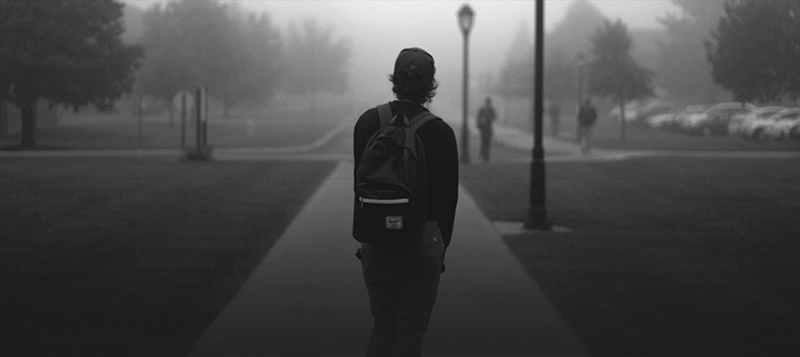This year, our spring break did not include a beach. Instead, it included seven different college campuses.
Our oldest is a high school junior, and we decided that a road trip to a few colleges our daughter was interested in – and a few colleges my wife and I were interested in – would be a nice way for the five of us to spend a week. (Still haven’t decided how smart of an idea that was. But no one seriously hurt anyone in the backseat, and I think the younger siblings benefited from the exposure.)
DISCLAIMER: I’m a marketing guy. My view of these tours might be a little tainted compared to the view of parents who aren’t in marketing or sales. However…
A couple of the colleges really had their act together. Others, not so much.
Here are a couple of highlights and lowlights. (To protect the guilty and innocent, I’m not including the names of any of these colleges.)
Picture-Perfect Campus
Some places just sell themselves. And the last university we visited was definitely one of those places.
The campus was beautiful. The tours were well organized. The tour guides were friendly and well informed. The marketing materials they shared were professionally created. Our tour group was small and engaged with the tour and each other. Even the college kids walking from building to building were well dressed and clearly focused on their academic endeavors. (Overhearing the conversations of these over-achievers was both inspiring and a little intimidating.)
The place basically reeked of past, current, and future success. I’d love for our daughter to be accepted at and attend this university. And I think she’d love to go there.
Disorganized Mess
The first campus we visited was pretty much the exact opposite.
We started in a sterile auditorium or lecture hall, where we all sat in the dark and watched a boring video. We were then herded from place to place in the most impersonal and inefficient manner possible. (Seriously, our tour of the campus cross-crossed itself three or four times.) Our tour guide half read, half mumbled her way through a script with which she was clearly not familiar. No one, at any point throughout the day, was there to answer questions regarding my daughter’s desired major…or even point us to someone who could answer them.
The whole thing was just unimpressive and disappointing – and particularly disappointing to me because this was one of the colleges I was really hoping would make my daughter’s short list. But instead, it’s not even staying on her long list.
Those two campus tours were the extremes. I won’t go into the details of each university we visited, but here are some things that helped schools stay on or get crossed off our daughter’s list.
Good Tour Guide
Maybe it’s unfair to judge an entire university by the skill or personality of a student tour guide. But while a high school student and her/his parents are on campus, that college junior is the face of the university.
Tour guides who were personable, knowledgeable, and could easily access information made a very positive impact. Those “just doing their jobs” did not.
Tour guides need to think of themselves as salespeople. They should be cheerful and helpful. If they don’t know an answer to a question, they should know how to find the answer…quickly. They should be equipped with the right tools to do their jobs. And they should be charismatic – sharing details of the campus and the surrounding neighborhoods that a high school student and his/her parents could never learn for the university’s website.
Emphasize Strengths and Address Weaknesses
Most students and parents come to campus with at least a few pre-conceived ideas. Make sure you reemphasize the positive ones and address the common negative ones (especially those negative perceptions that aren’t accurate).
If people know that you have a great academic tradition, play that up. If your school’s reputation lags behind its actual academic standards, make sure that everyone knows that. Point out steadily increasing SAT scores, or average high school GPAs, or current high rankings different departments have received from national publications.
Consider all the positive and negative perceptions that exist: size, academics, crime rates, recreation options, placement rates, “snobbiness,” athletics, number of majors, and more.
And don’t spend too much time on the things that every other college has. Focus on what makes your school and your campus unique.
Professional Marketing Materials
Again, I’m a marketing professional. So, maybe I look at things with a little more critical eye. But I’m quite confident other people walked away with the same impressions, even if on a subconscious level.
Long videos were not well received by anyone.
Well-designed tour maps and take-home brochures helped create lasting positive impressions.
Tools (printed or digital) that enabled tour guides to find answers and share information were invaluable.
The Overall Experience
Campus visits can include a lot of different parts. A student might take a walking tour of campus, walk through a dorm, visit the athletic or recreation facilities, talk with an advisor or professor representing the student’s intended area of study, and be exposed to a number of printed and digital marketing materials.
When universities took a holistic view of these different aspects, good things happened. When a series of consistent messages were repeated without being redundant, people walked away with a clear understanding of that university’s brand personality…and what that place has to offer that student.
When these aspects were clearly not coordinated, tours became redundant, while still leaving important questions unanswered, and no one left with a positive impression.
Those were some of the good and bad we experienced during our campus visits, but the lessons learned can be applied to any sales presentation. Here are some tips for anyone who is helping conduct or shape a campus visit or other sales presentation that includes a tour.
- A campus visit should be viewed like any other sales meeting.
- All the marketing materials shown to or shared with the potential student and parents should be professionally created, on brand, and deliver a clear benefit message.
- Everyone involved with the tour should realize her or his role in the sales process.
- Realize and play to the different roles the kid and the parents play in the decision-making process. Your messages must appeal to both.
- The people making the presentations and giving the tours should have the necessary tools, knowledge, and personality to create a positive experience. (No one is expecting the tour guides to have all the answers off the top of their heads, but they should have the answers at their fingertips.)
- And most importantly, consider the entire “show.” What’s it like to park on campus? How is the tour guide dressed? How far will students and parents be expected to walk? What materials will the visitor take home? At what point does the visit become personalized? Do all the aspects create a consistently impressive impression? What follow-up materials will the kid and/or parents receive? You never know which big thing or small detail will tip the decision in your direction or toward the other guy.


